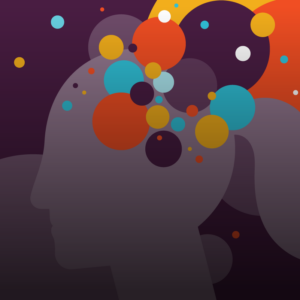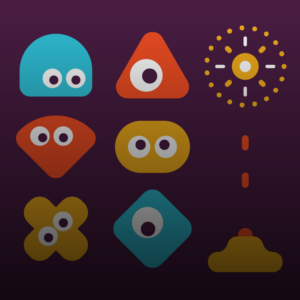
There are a lot of sensationalist reports and claims about AI in recruitment, which, quite frankly, are a minefield of mixed messages and poor emotive conclusions.
On one hand we are told that AI is the all-encompassing panacea to removing bias in the workplace. On the other hand, we are told we should avoid it like the plague because it is the source of bias.
Neither are strictly true.
The truth is that the mainstream media loves to sensationalise the negatives for a dramatic read. And many companies are disturbingly over promising this new trend to make a quick buck.
But somewhere in the middle there is a clear and well researched take on positively and realistically using AI in recruitment.
That is why we have written this blog.
To provide anyone in the HR space a clear take on how and why to avoid the sensationist traps, and instead, meaningfully use AI today to drive an equitable future.

The ethical imperative for using AI in recruitment
In this section we set the scene for why we should embrace AI …
Consider you are going for open heart surgery. You are told that a robot surgeon gives you a much higher chance of survival than a human surgeon.
I know which one I would choose.
We regularly consider the ethical downsides of using machines. What could go wrong? But if a machine is proven to be fairer, safer, or more reliable than a human, would we not have a moral obligation to use it?
Consider using AI in recruitment. If a machine could more fairly assess a candidate than an interview panel – would we not have a moral obligation to use it?
This is possible today.
The AI now exists to match billions of people to jobs based on skills and potential in a fairer and more consistent way than could ever be possible with a human interview panel.
Humanity is beautiful but flawed
Why humans make inconsistent and unfair decisions in recruitment…
If you fundamentally believe that all humans have a right to be given fair opportunities and enjoy the work they do, then you believe in equality at work.
I hope most of us do.
But if you properly appreciate humanity in its entirety, then you will also understand that us humans are flawed.
The things that effect our decisions are vast and complex.
In a study wonderfully named: “clouds make nerds look good”, it was found that college admission officers, favour strong academic credentials on cloudy days, and conversely, they more highly rate non-academic strengths on sunny days.
It has also been found that court judges give more lenient sentences when it is the defendant’s birthday.
In recruitment, a quarter of interviewers sitting on exactly the same panel, at exactly the same time, with exactly the same set of candidates, will disagree on which candidate is the best fit for a job.
Why such variation? Human bias?
Bias is defined as prejudice for or against a particular group or person e.g., selecting a candidate because they look or think the same as you.
The reality is that all humans are biased. Anyone that claims otherwise is wrong. This has been proven by many experiments over and over again. Human bias definitely plays a part in bad people decisisions.
But here is the twist – machines are also biased
Any AI we build is trained by us, from human knowledge or literature. So, it is likely to inherit, at least some of humanities natural biases.
Bias in recruitment is a hot topic of conversation at the moment. And rightly so – the goal has to be to remove bias from all our people decisions. But the harsh reality is that if we tackle bias elimination head on, it is practically impossible to achieve. Bias is so fundamentally ingrained in everything that has anything to do with us, that it is virtually impossible for us to even see it properly.
This is where most sensationalist mainstream media gets to. The machines are biased let’s get rid of them.
But to me this is massively defeatist, and I don’t want to give up on an opportunity to eliminate bias at the first hurdle.
When a problem gets a little trickly it is often worth taking a step back and looking at the bigger picture.
The bigger picture and a realistic understanding of what the AIs are doing
In this section we show there is something far more interesting going on, that if understood properly, is a true opportunity for sustainable equality…
Bias is one part of a much bigger flaw in human judgement – something that psychologists now call “noise”.
Noise is defined as variability in judgements of the same problem, e.g., your candidate selection being influenced by the weather, the day of the week, your mood, who you bumped into on your way to work, how much sleep you got last night, your experiences, your skill, the list is endless…
Until very recently we have failed to even notice noise as a problem. This is largely because our brains naturally struggle to comprehend the chaos of noise – we like simple patterns. We don’t want to admit there is so much unwanted and incomprehensible variation in our decisions. We would rather blame bias. We would rather think bad decisions were due to a few “bad people”, not factors out of our control, that affect us all.
In the award-winning book “Noise: a flaw in human judgement”, co-authored by Nobel prize winning psychologist Danial Kahneman, it is very clearly argued that if we ever want to reduce bias we must first start with noise.
The authors argue that the reason human decisions are so noisy is down to many factors – mood in the moment, emotional reactions, differences in taste, differences in skill, fatigue levels, as well as bias.
If we could remove all this noise, we would potentially remove some bias by proxy. But even more – and here is where things get interesting – by removing all the other complex factors that affect our decisions we would bring into sharp focus any remaining biases.
Here in lies the opportunity to properly see and then mitigate against our biases.
Because whilst we struggle to directly remove bias from our decision making, we do have very clear and obvious ways of eliminating all noise.
“The fact that noise has historically gone largely unnoticed and unchecked is not only a tragedy but also an opportunity, since big improvements in judgment accuracy, and thus fairness etc., are within relatively close reach.” Noise: a flaw in human judgement.
The opportunity for properly using AI in recruitment
In this section we show how using AI in recruitment must be about eliminating noise in the first instance …
I love noise. I love chaos. I love all walks of life and the flawed complexities of humanity. We should embrace human noise and give our differences freedom.
But not when we are making decisions that need to be fair and consistent.
It has been shown that noise in decision making can lead to gross injustices, unacceptable health hazards, and loss of time and wealth.
We go back to the very clear fact that we raised earlier: interview panels disagree on the best fit candidate at least a quarter of the time. This is mostly due to noise.
The good news is that in recruitment decisions, at least, there is a very clear and simple way of eliminating all the noise.
Within the last few years there has been a revolution in AI skills matching technology.
I’m not talking about AIs that use video or voice recognition – the jury is well and truly out on whether they work. I’m also not talking about early adopters of job matching tech – like Amazon who trained a recruitment AI on mostly male CVs and unsurprising found that it was very biased against female candidates.
I’m talking about job matching algorithms that use natural language processing to assimilate vast bodies of human knowledge. AI machines that have been trained for years on billions of words from across the globe.
Such machine learning tools can understand all the skills of an individual, considering skills transferability, context, and practice. This information can them be used to match and rate people against the skills requirements of any job.
Read our recent Enterprise Guide to Creating a Skills-based Organisation for more details on how this revolutionary new tooling works. How it can consistently and accurately match people to jobs at scale.
When it come to making fairer people decision, the key to such tooling, is that we can categorically say, without any doubt, that it removes all noise. And with that we can genuinely work towards eliminating bias in the world of work.
Driving future quality and avoiding the common traps
There are many people arguing right now that AI machines should not be used in recruitment because they might not reduce bias. For example, a recent article on the BBC called “AI tools fail to reduce recruitment bias – study”
On the surface they could be right. Machines are likely to still inherently contain some biases. We would be foolish to claim they categorically remove all bias.
But what the anti-AI articles fail to notice is that properly trained AIs are not about directly removing bias. They are about removing noise.
As a baseline this has to be an essential first step in making fairer people decisions. Machines will make fairer more consistent decisions simply because they eliminate noise. You can do this today. You can create more equality in your hiring process right now.
But this is just the beginning. Whilst machines might still have inherited some of our natural biases, by eliminating all the noise, we can begin, for the first time, to clearly see those biases. To truly understand them and start to mitigate against them.
Machines are not the source of bias. They might well have inherited some of it. But if we truly want to move towards a more equitable world, we have to stop blaming them for our own flaws. We have to stop using them as a scapegoat for our own inadequacies and claiming we are somehow better.
It is of course vital that we keep considering the inherent biases in machines and we continue to look for them, assess them, and remove them. It is vital that machines don’t become the all-encompassing panacea to improving our world. I don’t want to live in that world. I love humans and all our lovely flaws.
But ironically our fear of bias in machines might be the very thing that stops us removing bias.
Instead of getting stuck in the rut of fearing machines or throwing them under the bus the next time someone finds a bias in one – which will happen – it is our moral obligation to use them responsibly to create a fairer more equitable world.
Get in touch to find out how you can make a start today.
Sign up to our Newsletter
Keep up to date with a collection of articles, resources and insights for people hiring, managing and developing your people.



